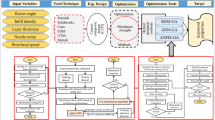Abstract
Through silicon via (TSV) is the enabling technology for three-dimensional integrated circuit (3D IC) realization. During the TSV manufacturing process, the TSV inevitably has a multi-fault with both resistive-open and leakage faults. The multi-fault will decrease the reliability of the 3D IC seriously. A method of classifying and diagnosing TSV multi-fault is proposed by combining ring oscillator and least square support vector machine (LSSVM). Firstly, the schmidt trigger (ST) as a TSV test receiver based on the initial ring oscillator test structure is implemented. The parameters such as the oscillation period and duty cycle are measured with the TSV as load. A variety of fault types can be detected by testing the changes of these parameters. For further increase the accuracy of the fault test, the oscillation period and duty cycle of different faults are utilized as the feature vectors set, and the set is trained by LSSVM to obtain the fault diagnosis model. In order to get the optimization parameters of the LSSVM model, the particle swarm optimization (PSO) is adopted. As the problem of PSO is tend to local optimization and premature convergence, it may lead to misjudgment of TSV fault. Based on this, W-PSO that dynamically changes the inertia weight is used to optimize the LSSVM. Finally, experiment results imply that the W-PSO-LSSVM fault diagnosis model has a higher fault diagnosis accuracy rate than the PSO-LSSVM fault diagnosis model.















Similar content being viewed by others
References
Jung DH, Kim Y, Kim JJ (2017) Through silicon via (TSV) defect modeling, measurement, and analysis. IEEE Trans Compon Packag Manuf Technol 7(1):138–152
Deutsch S, Chakrabarty K (2015) Contactless pre-bond TSV fault diagnosis using duty-cycle detectors and ring oscillators. Proc. IEEE International Test Conference (ITC), Anaheim, pp 1–10
Ni TM (2017) Vernier ring based pre-bond through silicon vias test in 3D ICs. IEICE Electronics Express 14(18):90–100
Lin YH, Huang SY, Tsai KH (2013) Parametric delay test of post-bond through-silicon Vias in 3-D ICs via variable output Thresholding analysis. IEEE Trans Comput-Aided Design Integ Circuits Syst 32(5):737–747
Deutsch S, Chakrabarty K (2014) Contactless pre-bond TSV test and diagnosis using ring oscillators and multiple voltage levels. IEEE Trans Comput-Aided Design Integ Circuits Syst 33(5):774–785
Fang X, Yu Y, Xu K, Peng X (2018) TSV-defect modeling, detection and diagnosis based on 3-D full wave simulation and parametric measurement. IEEE Access 6(72):415–426
Basith II, Rashidzadeh R (2016) Contactless test access mechanism for TSV-based 3-D ICs utilizing capacitive coupling. IEEE Trans Instrum Meas 65(1):88–95
Shang YL, Tan M, Li CQ (2019) TSV manufacturing fault modeling and diagnosis based on multi-tone dither. J Adv Comput Intell Intell Inform 23(1):42–51
Huang Y, Pan C, Lin S, Guo M (2018) Machine-learning approach in detection and classification for defects in TSV-based 3-D IC. IEEE Trans Compon Packag Manuf Technol 8(4):699–706
Zhou S (2016) Sparse LSSVM in primal using Cholesky factorization for large-scale problems. IEEE Trans Neural Networks Learn Syst 27(4):783–795
Sun Y, Liu Y, Liu H (2016) Temperature compensation for a six-Axis force/torque sensor based on the particle swarm optimization Least Square support vector machine for space manipulator. IEEE Sensors J 16(3):798–805
Gong Z, Rashidzadeh R (2016) TSV extracted equivalent circuit model and an on-Chip test solution. IEEE Trans Comput-Aided Design Integ Circuits Syst 35(4):679–690
Shang YL, Sun LY, Li CQ (2017) Test of mechanical failure for via holes and solder joints of complex interconnect structure. J Electronic Testing-Theory Appl 33(4):491–499
Lin YH, Huang SY, Tsai KH (2013) Parametric delay test of post-bond through-silicon Vias in 3-D ICs via variable output Thresholding analysis. IEEE Trans Comput-Aided Design Integ Circuits Syst 32(5):737–747
PTM. 45nm Predictive Technology Model [Online]. Available:http://ptm.asu.edu/. Accessed 12 May 2020
Song X, Zhao J, Song J, Dong F, Xu L, Zhao J (2020) Local demagnetization fault recognition of permanent magnet synchronous linear motor based on S-transform and PSO–LSSVM. IEEE Trans Power Electron 35(8):7816–7825
Eberhart R, Kennedy J (1995) A new optimizer using particle swarm theory. In: Proc. 6th international symposium on micro machine and human science, Nagoya, pp 1–5
Dong HB, Li DJ (2018) A particle swarm optimization algorithm for dynamically adjusting inertia weight. Comput Sci 45(12):98–102
Zhao ZG, Lin YJ (2016) A mean particle swarm optimization algorithm based on adaptive inertia weight. Comput Eng Sci 38(3):501–506
Acknowledgments
This research work is supported by the National Natural Science Foundation of China (No.61661013) and Guangxi Science Foundation of China (No.2018GXNSFAA281327).
Author information
Authors and Affiliations
Corresponding author
Additional information
Responsible Editor: V. D. Agrawal
Publisher’s Note
Springer Nature remains neutral with regard to jurisdictional claims in published maps and institutional affiliations.
Rights and permissions
About this article
Cite this article
Shang, Y., Tan, W., Li, C. et al. Detection and Diagnosis of Multi-Fault for through Silicon Vias in 3D IC. J Electron Test 36, 771–783 (2020). https://doi.org/10.1007/s10836-020-05916-y
Received:
Accepted:
Published:
Issue Date:
DOI: https://doi.org/10.1007/s10836-020-05916-y




